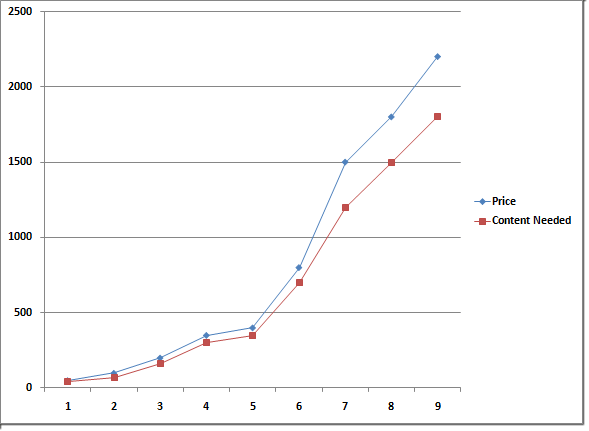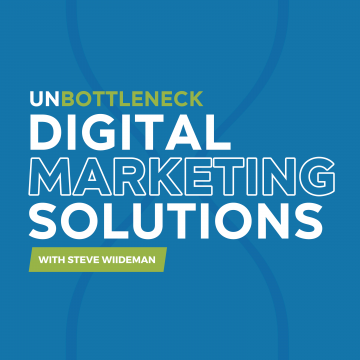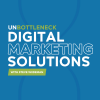Learn how to write content that ranks well in the search engines and provides enough information and trust to convert visitors to sales with is page on SEO content writing tips for content publishers. In this guide, I’ll be walking through a few important principles and best practices.
Download the Content Writing Guide
For those of you haven’t already downloaded my guide to writing content, please click the button below to get the PDF. For a step-by-step walk through of writing content, please read the article below the download link.
Now for Some Step-By-Step Instruction
It takes about an hour to write a really good piece of web content. Having college thesis flashbacks? Good, that’s because there’s not much of a difference. In school, your job was convince the teacher that your paper was so good that you deserved an A+. In the online marketing world, our job is to convince the reader that you are an authority and can be trusted. You must also come across organized and professional.
The first thing you’re going to need before you write about a topic is information. Here’s some information you might ask yourself about a particular service you offer:
- What turns buyers off in your industry and how are you different?
- Do you offer a service guarantee? How is it better than your competitor’s?
- Are there customer testimonials you can post below the sales content?
- Is there a waiting list for your product or service to show a demand?
- Data, data, data. Can you provide industry facts and survey information?
- Are you a member of the BBB, Chamber of Commerce or industry association?
- Do you have a promo for new customers or coupons available for download?
One technique I like to use is to have my wife interview me. It’s very frustrating and I have to hold my tongue at times, but the result is a very low-level page of content that someone NOT in my industry can understand. Expect lots of “what’s that”, “more detail please”, “I don’t understand”, and “I don’t get it” responses. That’s where your lingo turns to descriptive sales copy.
Structure your information into subheadings and write your content. As with a thesis paper, tell them what you’re going to tell them, then tell them, then tell them what you told them. Page organization is key to a good reading experience and excellent for search engine ranking.
Don’t think about keywords until you’re completely finished. This will allow you to think about how to sell the visitor on your trustworthiness and product quality FIRST. Then later go back in and insure you have keyword prominence in the following places:
- Your blog Heading (verify with your web guy that it’s the only H1 on the page)
- Your HTML Title (use call-to-action, keywords, and value proposition in 66 characters)
- Your Meta Description (same as title, only up to 160 characters)
- Somewhere near the top and maybe near the bottom of your content (think semantically)
Start a Conversation
Sales Principles. That’s right, all those nasty things your car salesman did to get you to fall in love with that piece of junk you’re driving around right now. These principles include, but are not any anyway limited to:
These principles combined with an irresistible offer and a great call-to-action (uh hem, “Click Me”) will help you get the sale, or to at least move them to the next stage.
Conversion Paths
The historical rule to any only transaction is “the fewer the clicks, the faster the sale”. In most cases, for an affordable product, this still holds true; provided of course that the site provides a good user experience.
However, consumers are becoming more acclimated to the Internet and the options the new shopping platform provides. Sometimes a quick transaction isn’t enough, especially in the case where a product carries a price over $100. The new rule of thumb might parallel a chart reflecting an upward curve in price with an upward curve in content required.

Ion Interactive created a product several years ago that they called “Liveball”. Liveball costs well over $4,000 just to get setup and a percentage of your pay-per-click ad spend to use. However, getting to play around with the program myself, I fell in love with the product. In the simplest words, here’s what their program did:
- Create several landing pages with a different experience on each
- Ask 1 question with 1 to 3 answers possible (starts the conversation)
- After a series of questions, identify with the need of the customer
- Include imagery, video and other media; limit scrolling
- Correlate the need to the product benefits
- Capture the lead info with no obligation
- Capture the sale for a price
Isn’t it fascinating how the above looks a lot like a funnel? The Liveball product was very similar, guiding prospects into a Conversion Funnel, or dozens of funnels. Rotating questions, answers, images, videos with each experience, the Liveball product actually created a “bubble” that isolated the experience that had the best conversion rate at the lowest cost.
Pretty cool right? Only I can’t think of anyone who can afford $4k, so for the most part you’re on your own with replicating this exercise. I would start by identifying your product cost. If it’s under $100 and you have more than 10 products, I’d recommend replicating an experience similar to Amazon.com using an SEO-friendly eCommerce platform, such as SEO-Cart.com. If your product is over $100, put some real time in making this Sales Page convincing, beautiful, not-too wordy and inclusive of the Sales Principles outlined above.
Got any recommendations on content writing? Please post your ideas below.





